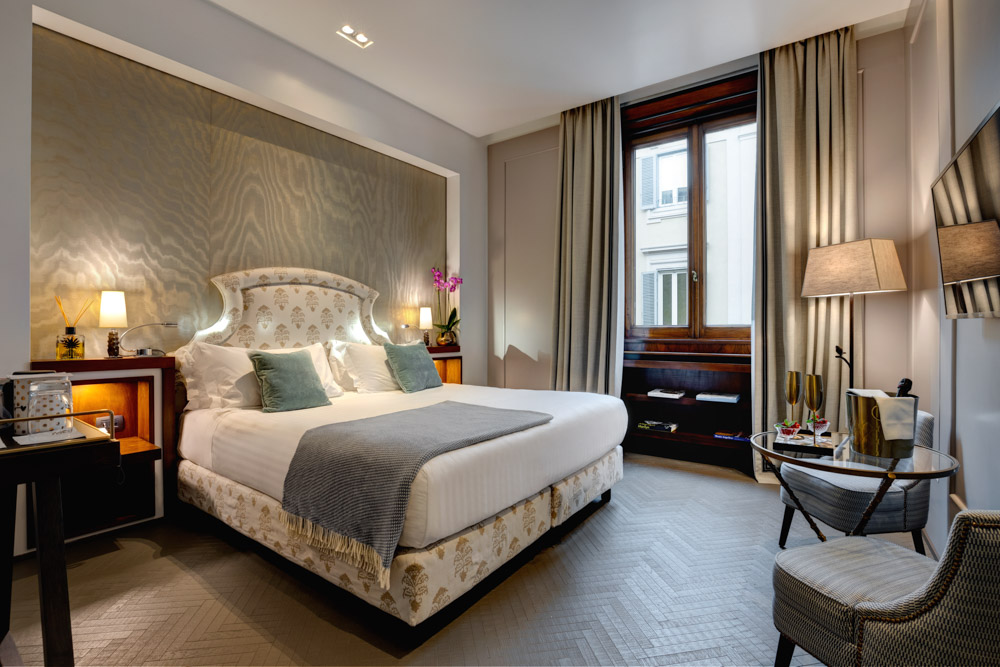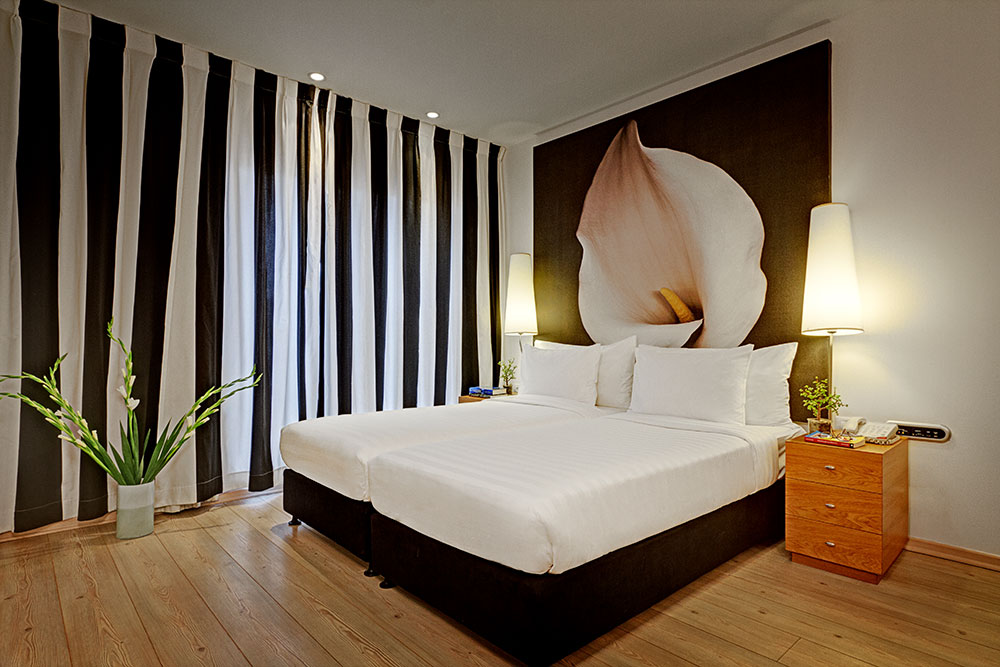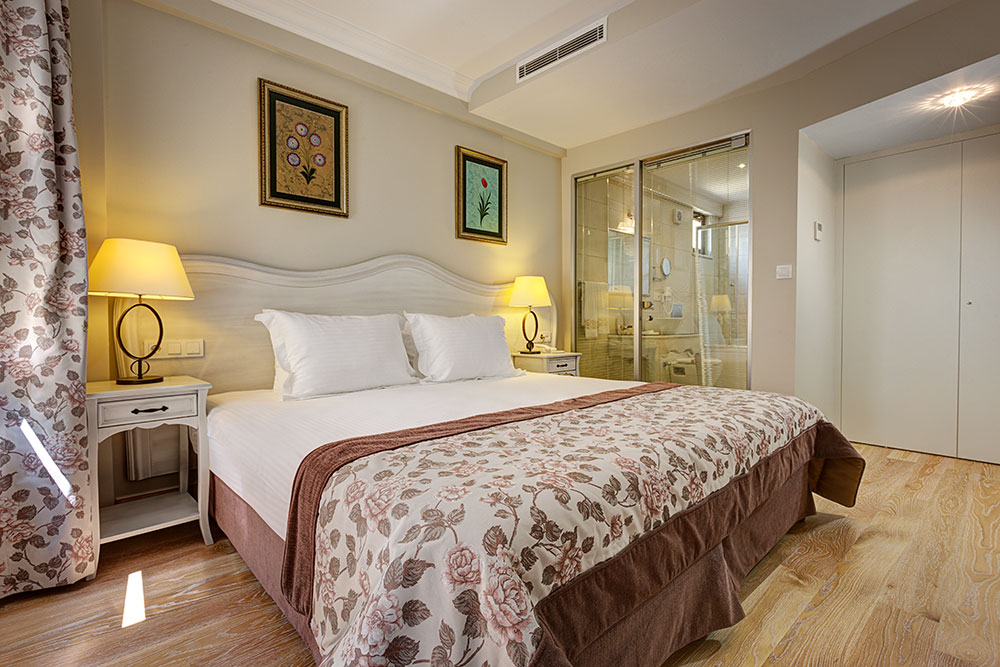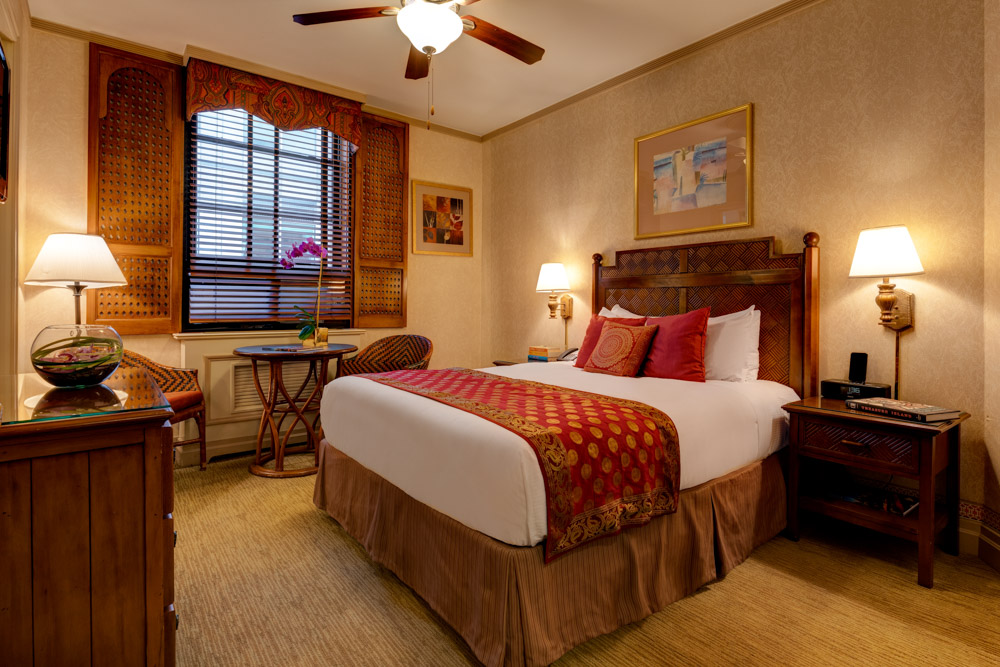At the end of a day’s photoshoot, a photographer’s work is barely halfway done.
Photoshop retouching of photographs sometimes takes as much time and energy, if not more, than the photoshoot itself.
If we talk about photography of hotels, and especially of their rooms, much of the time spent in editing is required by retouching the beds. Especially when the bedspreads are completely white, image editing can be quite long and complex, despite the time and attention spent in preparing the shot.
This happens because in photography even the shadows generated by the smallest folds of the sheets are accentuated and smoothing out any imperfections excessively can, in turn, be counterproductive.
The risk of the end result being that of an exaggerated and fake touch-up is always real.

Is there anything that can be done to help the photographer get shots where the retouching doesn’t have to be excessive and possibly avoid extra editing costs?
Definitely yes, and I’ve summarized in 6 points the precautions that a hotel should take the day of the shooting:
1) USE RUNNERS AT THE FOOT OF THE BED:
In photography, the worst part of an all-white bedspread is definitely the bottom side.
If you use a runner that can also partially cover that area the benefits are many:
- the risk of having a shapeless white mass is reduced, especially if the bedspread should be very soft
- the area of the critical area to be retouched will definitely be reduced
- the runner will also give an extra touch of style to your images
During one of my last shoots, I had suggested to the management of the hotel where I was shooting that I set up the beds with runners knowing that the hotel had them even though they were no longer in use.
To my disappointment, they decided not to use them for fear of creating false expectations.
A few days ago I came across an interesting post regarding a survey on the main reasons for guest dissatisfaction in rooms, I was not surprised to find the absence of runners in the rooms, where they were present in photos, among them!

2) TUCK THE BEDSPREAD UNDER THE MATTRESS
To pull the sheets of a bed to the maximum the ideal solution is always to put them under the mattress, having the foresight to fold the bedspread symmetrically on the corners.
Unfortunately, not all beds allow this setup, if the mattress for example rests on a simple wire mesh, the result is counterproductive.
The same is true if the comforter is too thick.
Moreover, it would be good if in hotels, where it is possible, making the beds in this way is a normal practice and not just an expedient adopted on the occasion of the photoshoot: entering a room and finding a bed well pulled is a detail that travelers always notice and appreciate.

Hotel Savoy, Tel Aviv
3) DO NOT USE QUILTED BLANKETS OR COMFORTERS
The seams of quilted comforters and blankets will always be visible in photographs.
For the day of the shoot get yourself some that aren’t quilted, even if they aren’t what you use on a daily basis.
As with runners, it is not cheating and you are not creating a false expectation!

4) DON’T USE SHEETS WITH A STRIPED TEXTURE
In food photography, when photographing a bottle of quality sparkling wine, you often fill the glass with cheap wine.
It is a practice adopted because less expensive sparkling wines have a coarser perlage and are therefore easier to photograph.
What does this have to do with our discussion?
Hotels often use white sheets that have a texture that creates a striped effect.
These sheets are more valuable than those in which the fabric is uniform. However, for the photographic shooting, they are less suitable, as removing shadows and folds without making the stripes disappear is almost impossible and the result is never the best.
Therefore, as for wine, on the day of the shooting, it is a good idea to use simpler fabrics.

5) DO NOT USE OLD SHEETS
If in the previous point I suggested using less valuable sheets, this does not mean that one should use old sheets and bedspreads.
A worn fabric will be less easy to stretch, will have creases that are less easy to iron, imperfections
more complex to retouch and a coarser weave that will potentially be visible in photos, especially on portals that require the upload of images at very high resolutions, such as Expedia.

6) USE CORRECTLY SIZED LINENS AND BEDSPREADS
If I had to quantify the number of times I couldn’t find sheets, bedspreads, mattress covers, or runners that were the right size for the bed in the room I was shooting in, the answer would be too many.
What’s worse is that the hotel wasn’t even equipped to remedy this.
Is it really possible for a hotel to have beds with sheets that are too long? Blankets that are too short? Mattresses that aren’t perfectly upholstered? King-size beds that are fitted with the wrong size linen on a daily basis?
These are neglects that jump out at guests, not just at the expert sight of a photographer.
What’s more, it’s true that miracles can be worked in editing, but the extra time to accomplish them can be very costly.

It happened to me recently, at the request of a client, that I had to literally smooth out some beds without leaving any creases. Although the end result was good I personally was not satisfied.
Some folds and imperfections, even if slight, in the right places, should always be present, with the aim of creating greater realism in the image, especially where retouching in Photoshop is necessarily invasive.
So take care that your beds reflect the expectations that your guests have of the stay that awaits them, but do not delude them with a perfection that is not real even to the eyes of the least experienced observers.

